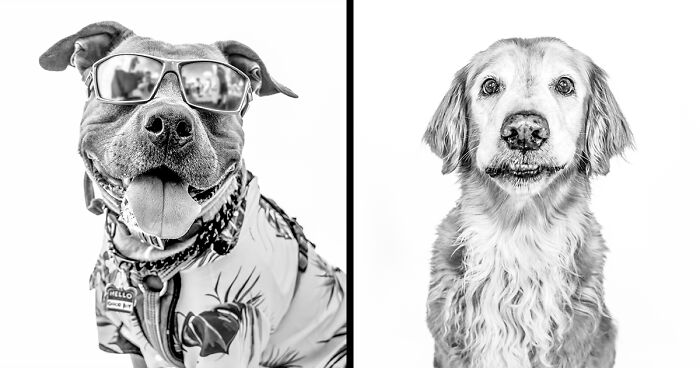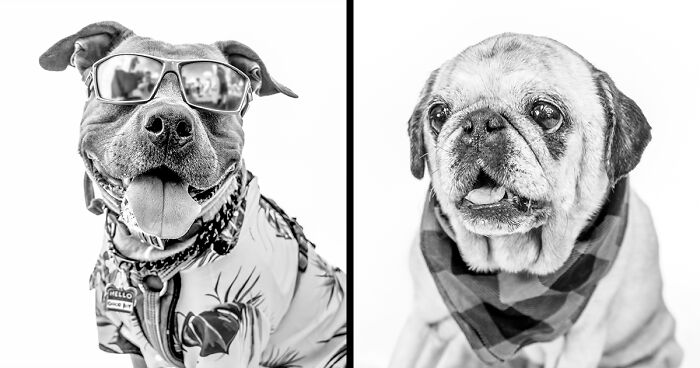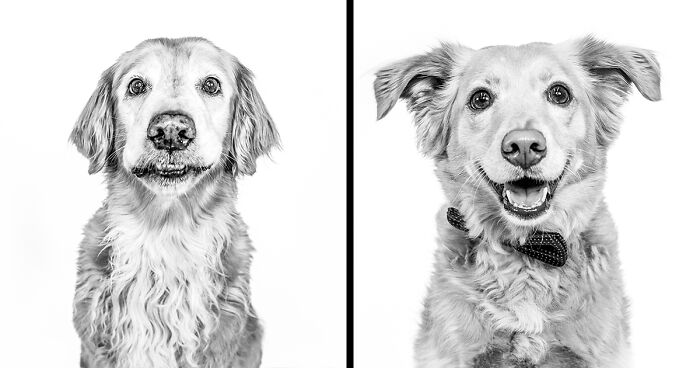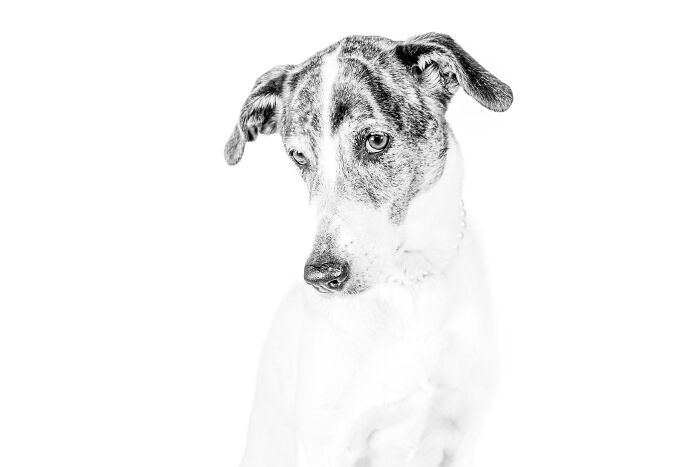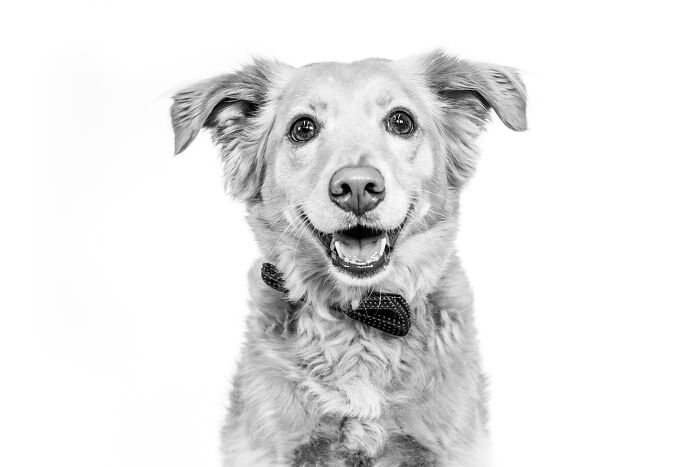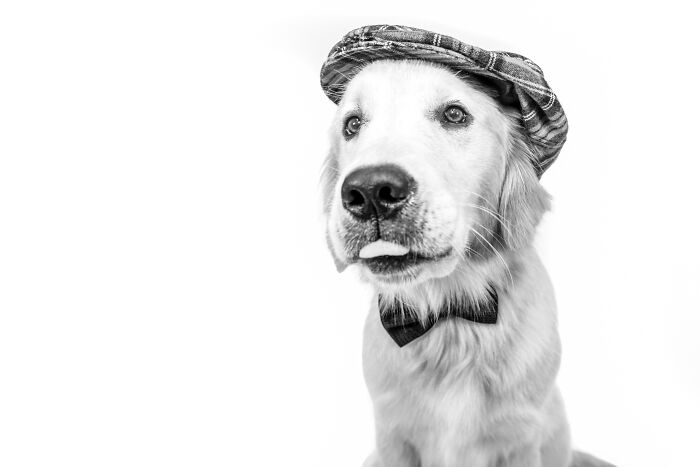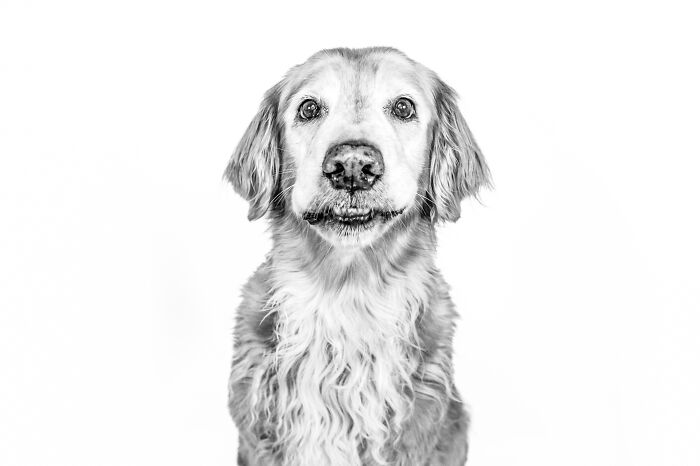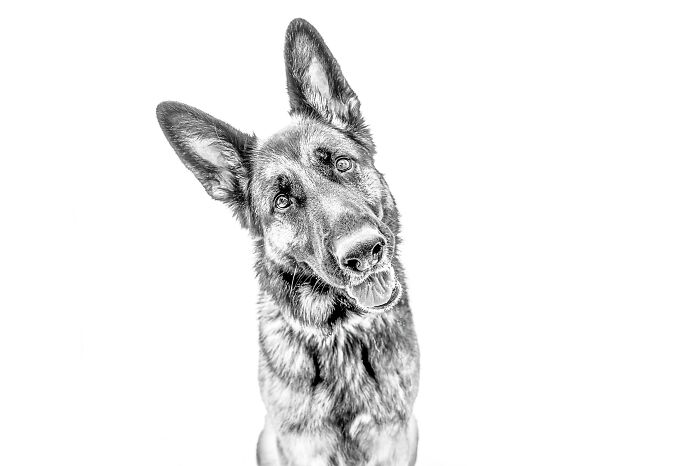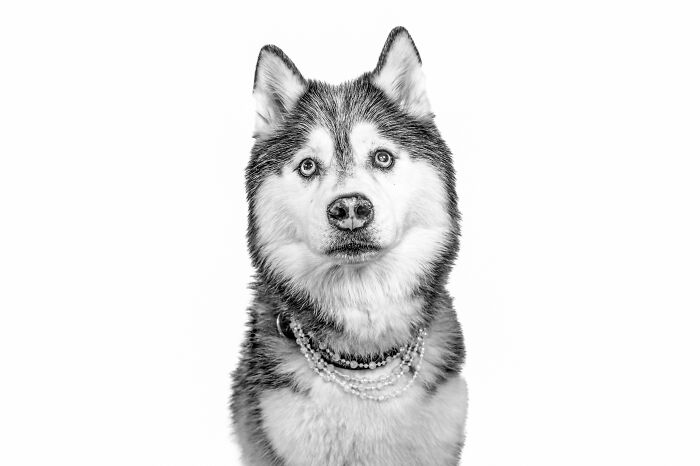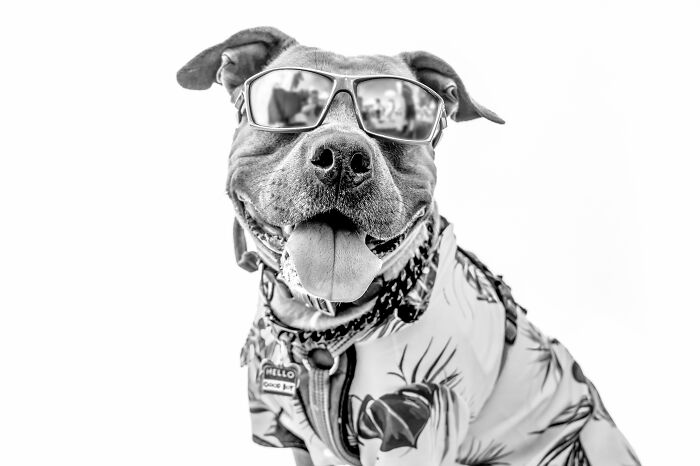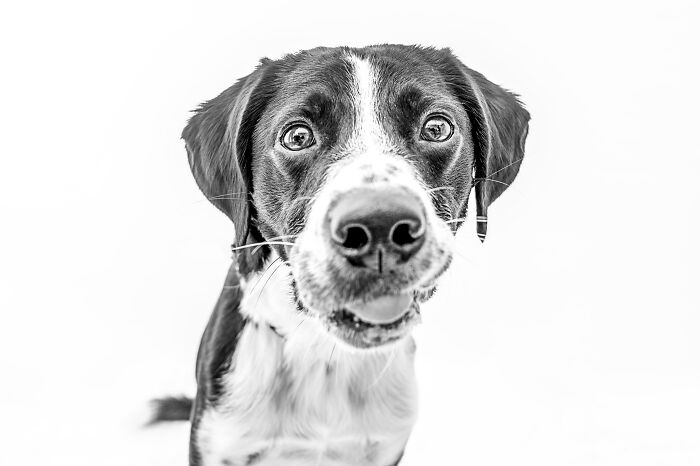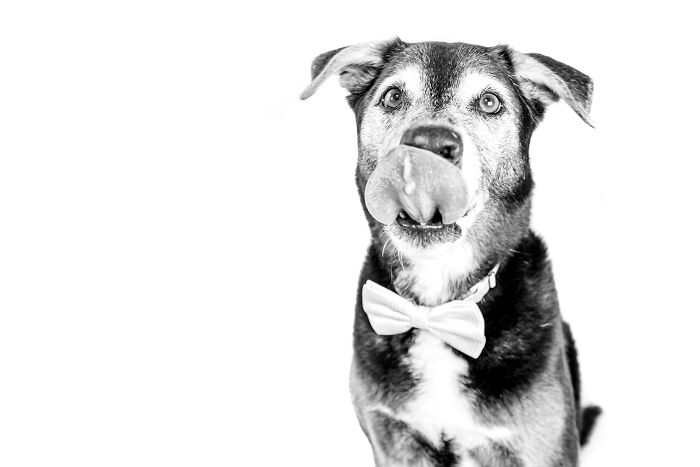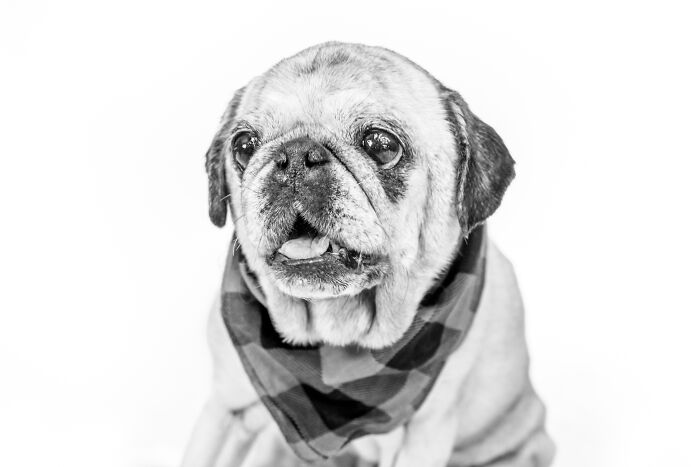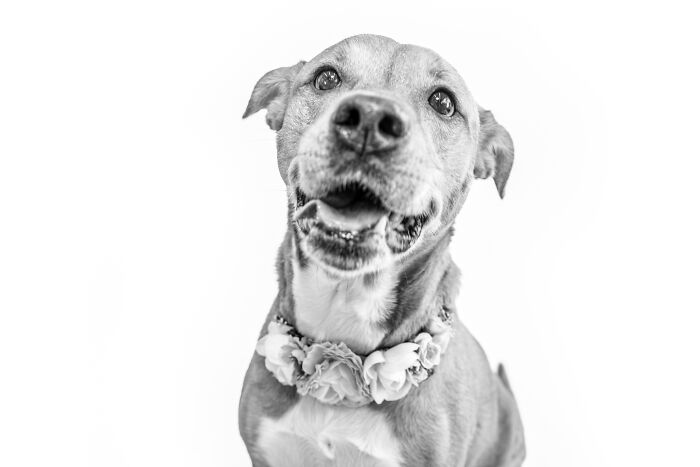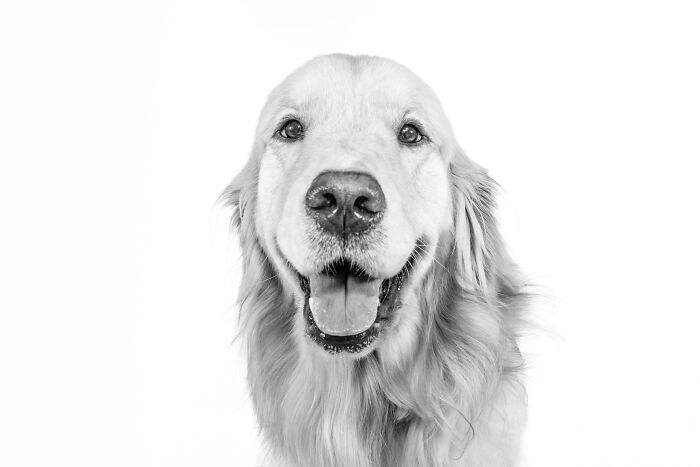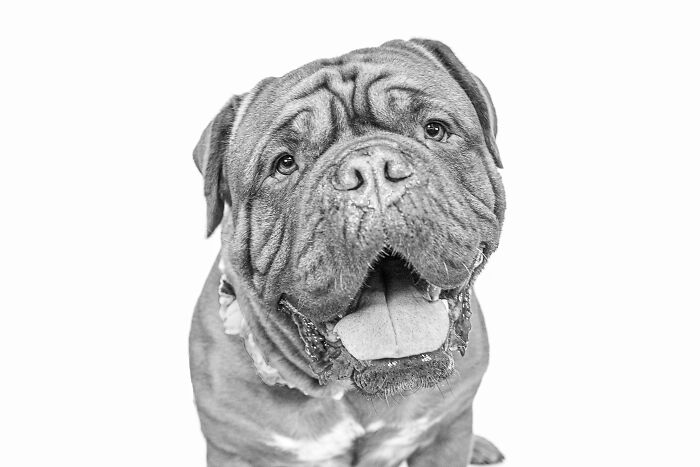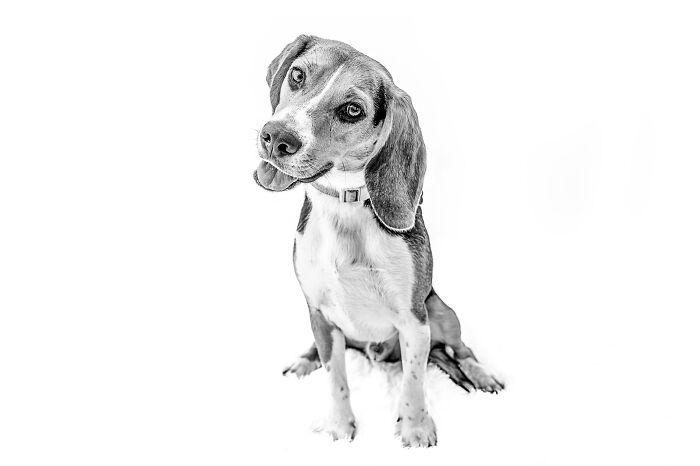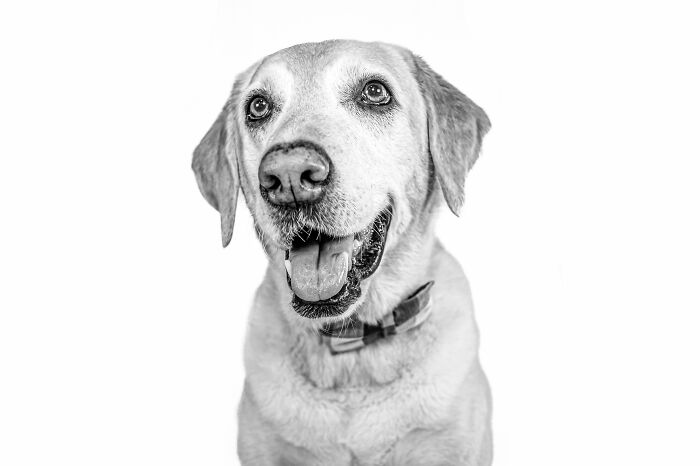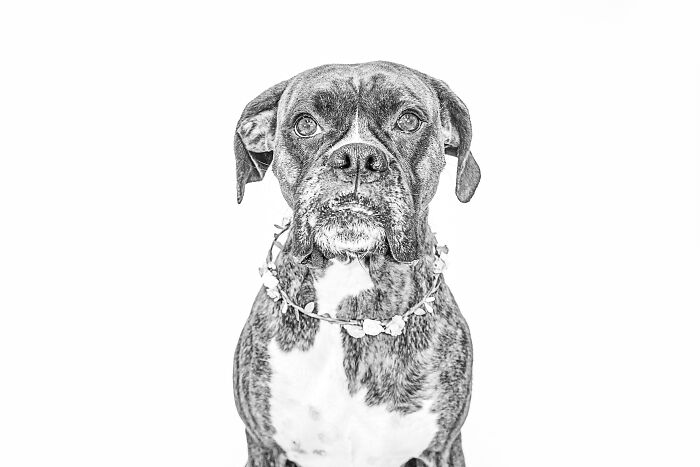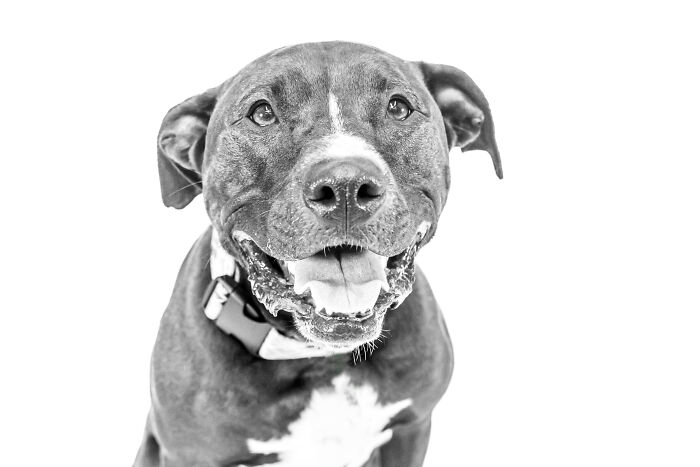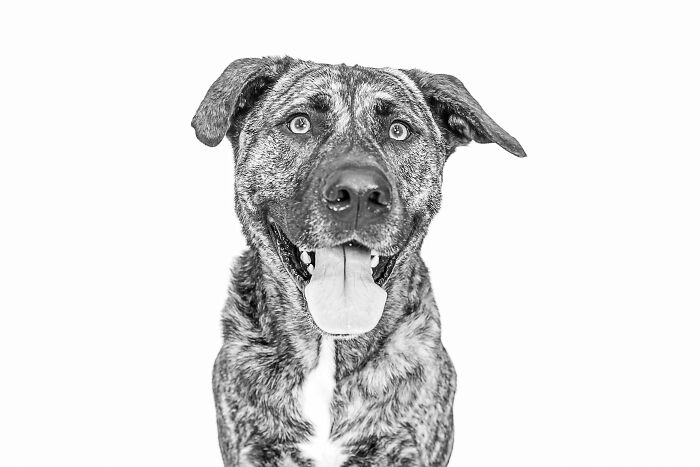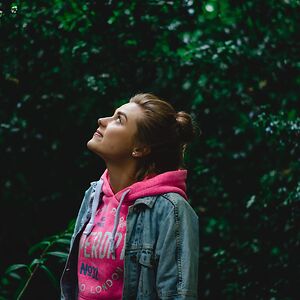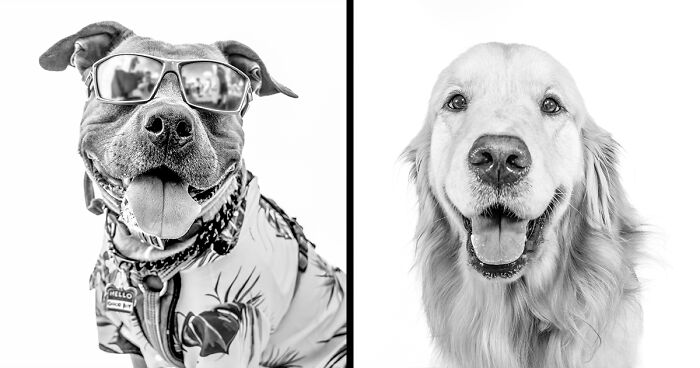
4Kviews
I Love To Photograph Dogs In Black And White, And Here Are My 18 Best Shots
Your eyes might be fooling you – these aren’t drawings.
I love to photograph dogs in black and white, adding a few special touches to make unique details stand out. Dogs are inherently dynamic subjects. Texture, movement, and features like whiskers shine in front of a camera lens, especially with good lighting. Proper lighting draws out a dog’s features, while some editing tricks (texture and clarity, for example) can emphasize them even more.
More info: melissablakephotography.net | Instagram
This post may include affiliate links.
I prefer to shoot in color on a seamless paper backdrop. From there, I use Lightroom to bring the color version to my liking, importing to Photoshop to complete any fine-tuning. I like to keep the color version as well, so I’ll convert a virtual copy to black and white, making a few more tweaks to really bring out the dog’s features.
So – how do I do it? When I tell someone I’m a pet photographer, the top two comments are “that’s so cool!” and “my dog would NEVER sit still that long”. Well, yes – they probably will.
I spent six years on a team photographing hundreds of dogs in a local shelter up for adoption. The dogs ranged from frozen and petrified (we coaxed many dogs out from underneath tables and off of the shelves) to highly caffeinated. We never knew what we were getting, so figuring out how to “speak dog” was essential for both safety and photo quality.
When meeting a new dog, I first watch their body language. Some run straight to me like we’re best friends, and others require a little bit of time. Regardless, I allow them to introduce themselves to me – putting them in control of the interaction.
If I have a confident and shy dog in one session, I’ll ignore the shy dog and start with the confident dog. Dogs are pack animals, and FOMO (fear of missing out) is often a big motivator. Speaking of motivation, it’s helpful to gauge what they like – treats (and if so, what kind?), toys, favorite words, etc. – and use that motivation when it counts.
Above all, I work to keep a calm and confident set. If things start to get too elevated (excited owner, little kids, a lot of noise, frustration, etc.), it’s important to re-set and give everyone a break. When the dog is done, they’re DONE, so we want to make the most of the time they’ll give us.
But sometimes, things don’t go to plan. The biggest challenge is often the owner! People are excited and want to be part of what’s happening, but it can quickly become overwhelming for the dog – and I won’t get any decent photos. Owners like to stand off to the side and point to me: “look at her!” which….makes the dog look at the owner, not my camera. Or they have young children who are delighted by my toy bin and wear out all the squeaky reactions. Or the owner will become elevated and excited (or frustrated) and the dog follows suit – losing all focus in the process.
It can be challenging to wrangle an excited or overzealous owner, but that’s sometimes the key to getting a good photo. Each situation is a little bit different, but I’ll give young children a stool to sit on – directly behind me – and a quiet toy to play with. Or I’ll suggest to an over-involved owner that it might be best if I handle the dog myself. Or stop the session and reset using a calm and confident tone – “let’s all take a breath, I think he needs a moment to gather his thoughts”.
Ultimately, the comfort of the dog is paramount. If the dog isn’t comfortable and refuses to cooperate, I won’t force it. Stopping a session is obviously not optimal, but I’m not going to torture a dog for the sake of a photo.
The feedback from owners is tremendous. With the advent of smartphones, you probably have eleventy-thousand photos of your dog on your phones. Even with the advances in smartphone cameras, which are pretty impressive these days, they often can’t compare to a properly lit, professionally edited photo. Moreover, I find that people tend to take photos from odd angles – standing up, behind the dog, cattywampus on the couch – candid snapshots that work for them, but don’t elicit the “….oh wow”.
That’s where I come in.
C'mere big boy! Who's a big boy? Who's a big boy? Are you a big boy? (Dog innocently swings massive head around to look in a different direction) *CLONK!* Ouch! My head! Oh, man, that's gonna leave a mark! Ow! Seriously, I am dizzy! What is your skull made out of, lead? Let me go grab some Ibuprofen for me and a biscuit for you, dude! Owee!
I get to know the dog and work to capture their essence. I capture the mischievous glint in their eye. The crooked grin that melts their family’s hearts. The wonky ear that’s unique to only them. Or the searing side-eye that says 1,000 words (many with four letters). In short, I work to capture what’s fleeting and will be gone one day but will continue to live in their hearts – and on their walls. I often show clients the back of my camera to gauge their reactions – call it comparing notes on the dog’s personality – and carefully select technically and emotionally sound images.
Detailed black and white photos have become my favorite way to embrace and celebrate our handsome good boys and pretty good girls. They get treats and belly rubs, and their people get priceless keepsakes. Win-win.
Wonderful set of photographs
These are wonderful! They capture the essence of these dogs in a way color photos can't.
These are wonderful! They capture the essence of these dogs in a way color photos can't.

 Dark Mode
Dark Mode  No fees, cancel anytime
No fees, cancel anytime 








